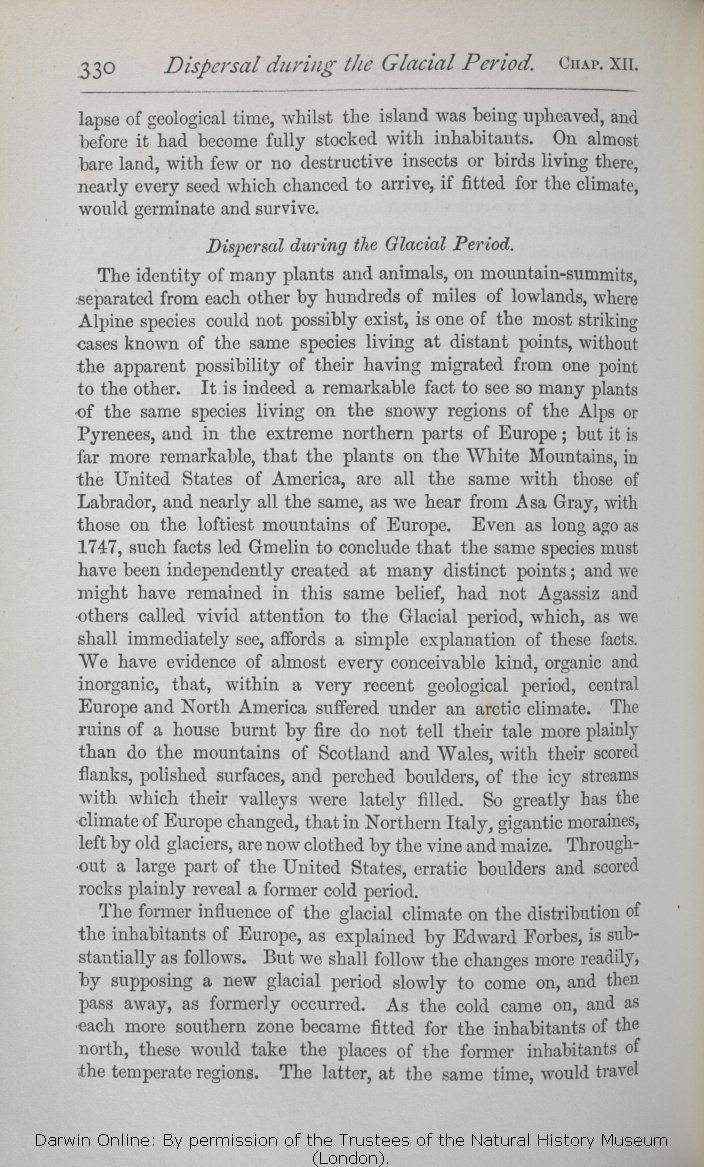of transport, during the long lapse of geological time, whilst
the | the 1869 1872 | | an 1859 1860 1861 1866 |
| upheaved, 1861 1866 1869 1872 | | upheaved 1859 1860 |
| ..... 1861 1866 1869 1872 | | formed, and 1859 1860 |
| seed 1866 1869 1872 | | seed, 1859 1860 1861 |
| if fitted for the climate, would 1869 1872 |
| would be sure to 1859 |
| if fitted for the climate, would be sure to 1860 1861 1866 |
|
The identity of many plants and animals, on mountain-summits, separated from each other by hundreds of miles of lowlands, where
..| ..... 1866 1869 1872 | | the 1859 1860 1861 |
| point to 1866 1869 1872 | | to 1859 1860 1861 |
| plants of 1866 1869 1872 | | of 1859 1860 1861 |
| species 1866 1869 1872 | | plants 1859 1860 1861 |
| many 1872 | | several 1859 1860 1861 1866 1869 |
| that, 1866 1869 1872 | | that 1859 1860 1861 |
| arctic 1866 1869 1872 | | Arctic 1859 1860 1861 |
| plainly 1869 1872 | | plainly, 1859 1860 1861 1866 |
| boulders 1869 1872 | | boulders, 1859 1860 1861 1866 |
| ..... 1869 1872 | | rocks 1859 1860 1861 1866 |
| rocks 1869 1872 |
| by drifted icebergs and coast-ice, 1859 1860 1861 1866 |
|
The former influence of the glacial climate on the distribution of the inhabitants of Europe, as explained
...| OMIT 1869 1872 |
| with remarkable clearness 1859 1860 1861 1866 |
| slowly to come 1869 1872 |
| to come slowly 1859 1860 1861 1866 |
| the inhabitants of the north, these 1872 |
| arctic beings and ill-fitted for their former more temperate inhabitants, the latter would be supplanted and arctic productions 1859 1860 1861 1866 |
| the inhabitants of the north, they 1869 |
| the 1869 1872 | | their 1859 1860 1861 1866 |
| places of the former inhabitants of the temperate regions. 1869 1872 |
| places. 1859 1860 1861 1866 |
| latter, 1869 1872 |
| inhabitants of the more temperate regions would 1859 1860 1861 1866 |
|









